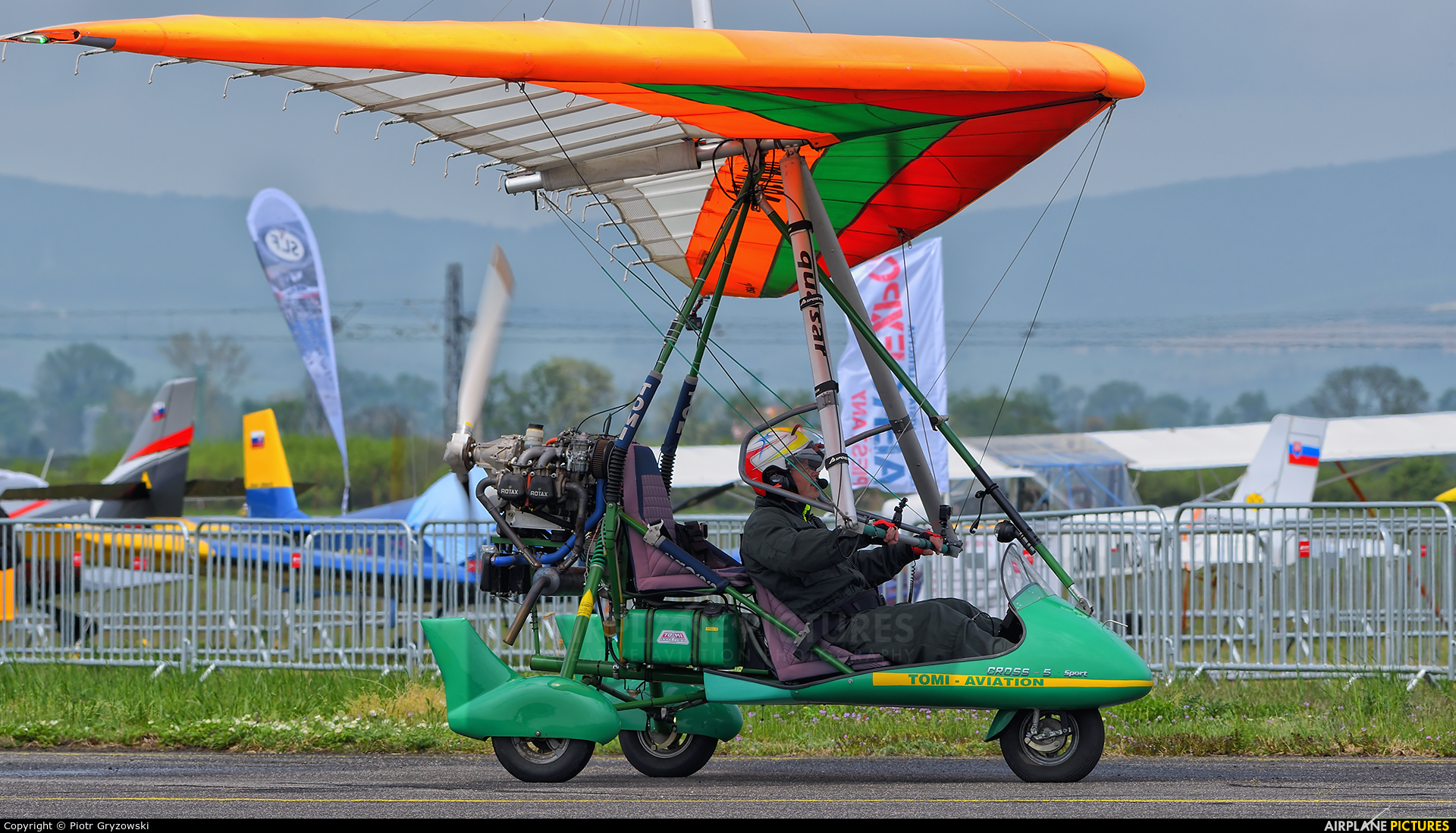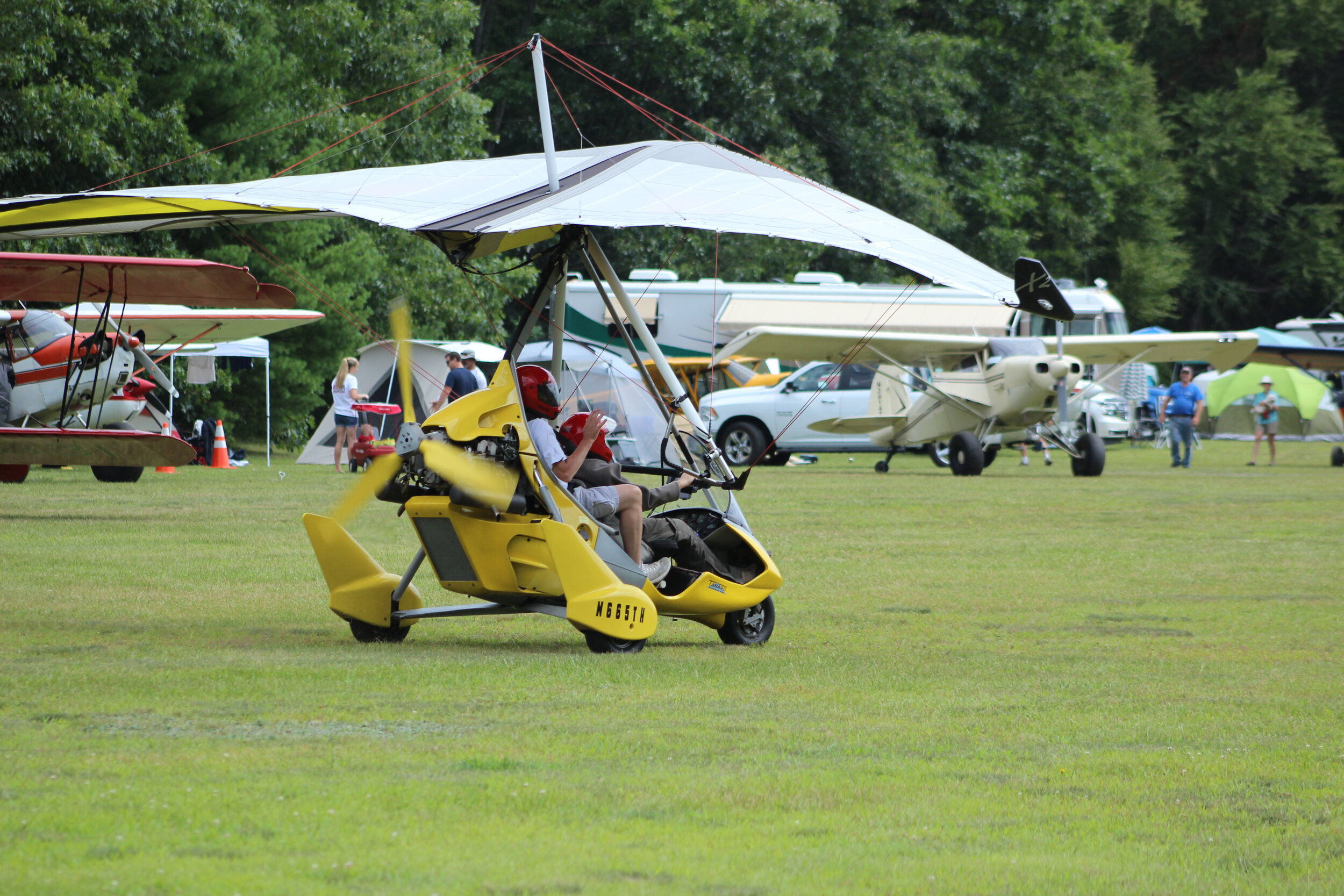Weight Shift Control Aircraft - These aircraft have a flexible wing, on which a three-bearing gearbox is suspended by a pusher propeller. The capsule can accommodate one pilot, or a pilot and one passenger. Trikes offer comfortable, affordable and fun flying and have been popular since the 1980s.
They are classified as ultralight in Europe and light sport aircraft in the United States. The aircraft is known by other names including 2-axis ultralight aircraft, flexible wing tricycles, ultralight tricycles, deltatrikes.
Weight Shift Control Aircraft

The history of the motor hang glider goes back to the invitation of a simple wing by Francis Rogallo and the development of innovations by Paresev and others. In 1948, Francis Rogallo proposed a self-expanding wing, which he published on March 20, 1951.
The British Microlight Aircraft Association, Flexwing
E.g. Flexible wing. In 1957, Rogallo gave his patent to the government, and with it in wind turbines, NASA began a series of experiments to test the Rogallo wing, known as the Parawing, to evaluate it as a recovery system for Gemini space capsules and spacecraft. restoration of the used horizons of Saturn.
F. Rogallo's group modified and extended the simplest theory to semi-rigid structures. This is especially important when sealing leading edges with compressed air rods or strong structures such as aluminum tubes. In the 1960s, NASA made the first test flights of a powerful cargo aircraft called the Ryan XV-8 or Fleep (short for "flying jeep").
And in March 1962, a heavy aircraft named after Paresev. In 1967, NASA abandoned all Para Wing programs due to the use of round parachutes without consideration for the development of ultralight gliders themselves, but for simplicity of design and lightweight design with soft launch capability and its landing methods. This is known to flying creatures as well. The challenge was to modify and attach the Rogallo's flexible wing to a suitable frame that could be used as a glider.
An important development regarding the trike was the introduction of several mechanical innovations developed by engineers Paresev and Flip; they confirmed that the Rogallo wing was suitable for powered and unpowered freeflight as well as a level of safety.
The World Directory Of Light Aviation
Paresev's experiments sparked interest in the design from several craftsmen, including Barry Palmer, and Sport Aviation introduced Jim Hobson of the Experimental Aircraft Association in 1962 (shown on U.S. national television on The Lawris Welk Show in 1962). Mike Burns in Australia designed and operated the boat-towed SkiPlane from 1962 to 1960. Mike Burns' friend John W. Dixon built a ski kite and improved the ski kite with Mike Burns; he designed a ski kite that used what could be George A. Spratt's simple 1929 triangular control bar or an A-frame with a single pdulum weight adjuster.
Where the pilot sat in the rocking chair and the control box and cable distributed the load on the wing and gave the box the freedom to push/pull to control the variable weight.
As opposed to the flat kites used in the water ski show. The Ski Wing kite was first photographed in public at the Grafton Jacaranda Festival in September 1963 by Rod Fuller while being towed behind a motorboat. Australian actors such as Bill Bennett

Although rigid wings were developed in the early 1970s, none of them sold well, while units of hang gliders appeared around the world, creating a variation of Dickson's Ski. In 1972, articles about hang gliding were published in Popular Mechanics and Popular Science, further increasing its popularity.
Aeros Ant Nano Trike, Folds Down Into A Bag To Fit In The Back Of Your Suv
Manufacturers of hang gliders and hang gliders with Rogallo wings are profitable when they are organized and the popularity of the sport industry has grown. Dixon's modifications and innovations resulted in a portable aircraft that greatly simplified maintenance, storage, transportation, assembly and repair. In addition, the flexible wing is self-programmed to plan for changes to improve.
Key developers include engineers Paresev, Barry Palmer, John Dickson, Bill Bennett, Bill Moyes, Richard Miller and hundreds of other innovators who contributed to the success of the flexible wing hang glider.
In 1961, Thomas Purcell built the Rogallo airframe with an aluminum frame, wheels, seat, and original power rods; he soon replaced the wheels with floats and piloted the aircraft.
In 1964, Pierre Aubert saw a NASA photo of the Fleep and built a similar trike. Like the Fleep, its Rogallo wing is fixed and does not allow control of the pdulum's weight transfer.
Eagle Trike Chassis Plans (experimental Or Ultralight Aircraft)
In March 1967, pilot Barry Palmer completed the first prototype of a true heavyweight trike: the Paraplane;
It was controlled by a unique control unit, similar to Paresev's experimental glider, that powered it. The paraglider used two 8 hp West Bd-Chrysler 820 engines. at 6000 rpm, reduced to 4700 rpm, about 6.5 hp each. each, only 13 hp Each genie is directly driven to a 27" propeller made from polyester and fiberglass. On March 24, 1967, Palmer registered a hang glider with the FAA as the Palmer Parawing D-6, serial number 1A, registration number N7144; restrictions are unknown.
Palmer's second trike, the Skyhook (FAA registration N4411), despite its early launch, had most of the features of a modern ultralight aircraft, except for the use of air conditioning. not yet available. It was powered by a 17 hp JLO L297 single-cylinder two-stroke engine. at 5000 rpm driving a composite propeller designed and built by Palmer himself and driven by a 2.1/1 reduction gear. The motor is electric and the manufacturer installed a fiberglass composite level spring. Airtight 6061-T6 aluminum glass construction with 6061 T-6 extruded corners. The ship takes off, flies, and lands at about 30 miles per hour.
The invention of the Rogallo wing made Dixon's hang glider popular and inspired several builders in the 1970s to attempt piloting their own simple wing aircraft.
G Mznb Pegasus Quantum
But unlike Barry Palmer, who put gravity under the keel, most builders put the genie in the wing, where there is a good balance between using too much power, the plane can overtake the pilot, and not enough power to. log off. That was until Roland Magallon looked at the ultralight Motodelta.
(The Rogallo winged aircraft, designed by Jean-Marc Geyser, has a "fuselage" and a rudder) Magallon decided to replace the "fuselage" of the Motodelta with a simple tubular frame with a pdul and launch it with a rudder.
Thus, it is believed that Magallon invited the tricycle because he was the first to sell it. He named the first version "Mosquito" and sold it from October 1979 to 1981. The prototype flew with a 125 cc McCulloch MC-101A engine. He later fitted it with a 15 hp Solo 210 engine. (11 kW) at very low speeds.
The "trike", as it was soon called, quickly became popular in Britain and France, where it had a resurgence. Hang glider technology shows its origins from hang gliders, although hang glider wings are no longer modified but designed to increase power. In fact, some trike wings on the market cannot be used as foot-launched gliders because they are too heavy and too fast.
Eaa Insurance Solutions: Warm Weather Flying In Powered Parachutes And Trikes
Many trike manufacturers simply outsource the undercarriage and buy the fenders elsewhere. Most of these companies are located in Europe, and their number is known in the United States. The instruments can be found in India, South Africa, Australia and other places. Manufacturers typically sell individual ultralight motorized hang gliders for between $10,000 and $17,000.
Prices are often reduced if the wing is included. High-end tricycles can cost anywhere from $15,000 to $30,000 and up. For example, a two-seat Air Creation Tanarg can cost up to $85,000 an hour with all performance options available.
Brian Milton flew from London to Sydney in 1987 in a Dalgety, the longest ultralight flight on record at 59 days. Dalgety Flyer on display at Sydney Airport. In 1998, he made the first round-the-world flight in an ultralight aircraft, flying in 80 flight days (about 120 days) on the Global Flyer, Pegasus Quantum, crossing the Alps and sounding with a Syrian MiG, setting the Guinness Book of Records. Record for the first and fastest ultralight circumnavigation of the world, which resulted in the Britannia Trophy, including the Segrave Trophy.

January 19, 2008 Mark Jackson from Altrincham, UK, flew over Kilimanjaro. In doing so, he broke the record for the highest altitude achieved by an ultralight aircraft at 24,262 feet (7,395 m) and the fastest climb to 20,000 feet (6,100 m) (25 minutes). He broke the British record for the fastest climb to 10,000 feet (3,000 m) (19 minutes). He made the jump with Eva Jackson.
The Microlight Revolution
In 1994, Serge Zine set the altitude record at Sainte-Aubin at 9,720 meters. We and our partners use cookies to store and/or retrieve information on your device. We
Shift control module, weight shift control aircraft flying handbook, shift control cable, shift control, gear shift control cable, weight shift control aircraft for sale, aircraft weight shift formula, weight shift aircraft, omc shift control box, evolution trikes revo weight shift control aircraft, weight-shift control aircraft, weight shift aircraft for sale

Post A Comment:
0 comments so far,add yours